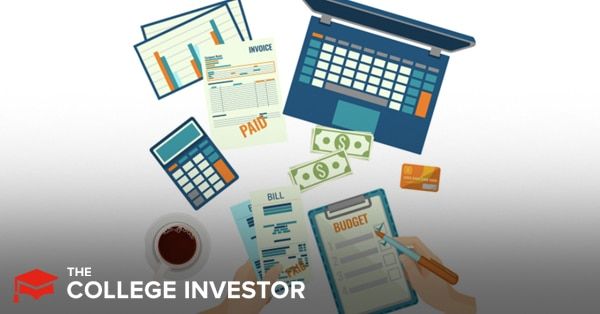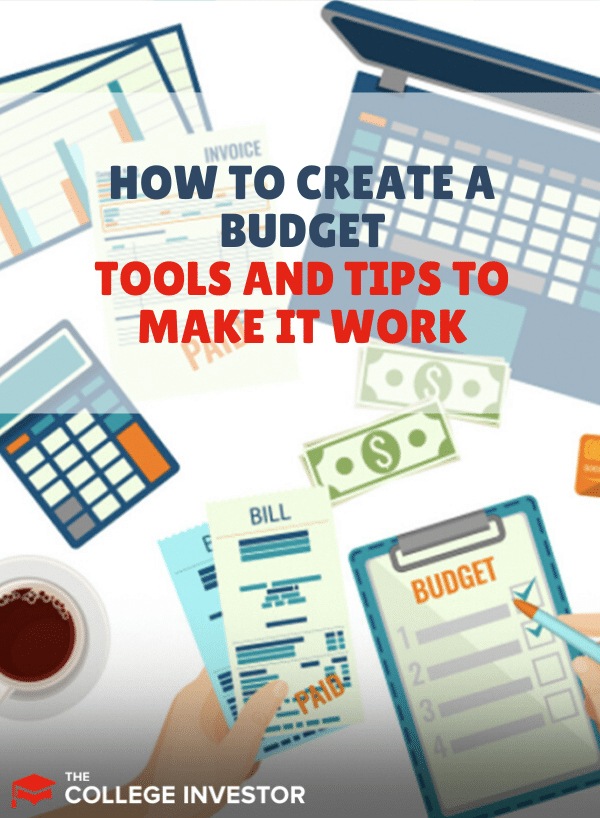
Want to gain control of your cash? Then you probably need to learn how to create a budget. A budget is still the best tool to help you control your spending and achieve your financial goals.
But getting started with budgeting can feel intimidating. Between your bills, subscriptions, and in-person purchases, how in the world do you go about tracking all your expenses throughout the month? Learning how to create a budget may seem like more work than it’s worth.
But don’t give up on budgeting before you even start. With the right strategy and budgeting tools, building a budget may be a lot easier than you think. In this guide, we give step-by-step instructions on how to create a budget that actually works.
The Number One Thing You Need To Create A Budget
Before you learn how to create a budget, you need a reason to budget. If you don’t have a compelling reason to budget, your budget will just be a meaningless document telling you to spend less money. And it's doubtful that you’ll stick with it.
So if you want to be successful with budgeting over the long run, you’ll need to define your “why.” Why are you wanting to budget in the first place?
Sometimes your reason will be tangible and short-term. Maybe you want to pay for a specific trip, for a wedding, or get rid of all your student debt.
Other times your reason will feel more nebulous. You want to feel in control of your finances, you’re trying to combine finances with a partner, or you want to cut down on friction in your relationship.
As long as the goal is meaningful to you, the budget can be successful. With that, let’s get started.
Step One: Get To Know Your Numbers
Once you know why you’re budgeting, you’ll want to get some data about your income and spending. Your historic income and spending are the best predictors of your future behavior. If you understand where your money went for the past few months, you can make a plan for where it should go for the next few weeks.
The best way to get information about your spending is to use some sort of app. With many of the top budgeting apps, you can get your bank accounts and the app will categorize spending for you.
Some of our favorite budgeting apps are YNAB, Tiller, and Personal Capital. You can compare them here. All of the apps allow you to categorize spending and get insights into your income and spending habits.
You can also:
- Use a spreadsheet or Excel
- Use a notebook
- Build a calendar chart
The main goal here is find a system that works for you based on your style and how you prefer to do things. For example, if you like a digital calendar, you might prefer an app. But if you like to have a calendar notebook, you might prefer pen and paper to keep track.
Step Two: Decide On A Budgeting Strategy For This Month
Once you have some information about your historic spending, you’ll want to decide on a budgeting strategy for the month ahead (or you can budget from pay period to pay period if you prefer).
When you’re learning how to create a budget, you don’t need to commit to one strategy for life. Below are some of the most popular budgeting strategies that actually work. Feel free to try a few of them until you find the one that’s right for you.
Zero-Based Budget
A zero-based budget is a budget where every dollar has a job. The tool You Need A Budget is designed specifically to help you build zero-based budgets.
In a zero-based budget, you list your income, then subtract savings and investments and fixed bills. Then you allocate the remaining funds to discretionary categories such as groceries, entertainment, and travel.
The zero-based budget is a great budgeting method for people with variable incomes. It can help you see ways to adjust your spending and savings based on the income you’re actually earning.
However, it can be time consuming to make this budget. Some people find it is not sustainable over the long run.
An Account For Everything
A variation of the zero-based budget is the “account for everything” strategy. Under this strategy, you automatically transfer money to various accounts with each paycheck.
For example, you might have a car fund, a travel fund, a fun fund, a bills fund, and an emergency fund. You can use the money in these accounts as a sort of “pseudo budget.” If you’ve got money in the “fun account” you can go to a basketball game, or meet friends for drinks. But once that money is gone, you put a stop on that until your next check comes in.
This ensures that every major goal is funded without having to think too much about the budgets. This strategy works best if you’ve got a stable income and you have a financial buffer in your main checking account. You don’t want auto transfers to cause overdrafts.
If automatic transfers sounds like the right budgeting strategy for you, an automated savings app could help. Here are the top 8 automatic savings apps.
Cash System
The cash system is a very simple budgeting strategy. Your income is deposited to a checking account, and all your bills (such as rent and utilities) are paid directly from the account.
Then you decide how much other money you want to spend on variable expenses (like grocery, eating out, etc.). You withdraw this money from the ATM, and spend it until it’s gone. Then you don’t spend anymore money until the next week when you hit up the ATM again.
Many people use this system to correct bad spending habits. Cash is a physical reminder of how much you’re spending, and it can help you be careful without the need to track every single expense. Once they’ve established good spending habits, many people switch their “cash” budget to credit cards which allow them to earn points. Check out our list of the top rewards cards available today.
50-30-20
The 50-30-20 budget (or a percentage-based budget) is designed to help you put a set percentage of your income towards various expenses. In this budget, you put 50% of your income towards needs, 30% of your income towards wants, and 20% of your income towards investing or debt payoff.
The most effective way to implement this is to automate everything and to use several accounts. First, you’d put half your check to a “needs” account where you’ll pay for expenses like rent, utilities, vehicle repairs and groceries. Second, you’d automatically draft 30% of the check to a “wants” account where you’ll spend on travel, gifts, and eating out. Finally you’d contribute 20% of your check to your 401(k) or another investment option.
This strategy works well if you have a stable income and your necessary expenses are a relatively low percentage of your income. However, the specific 50-30-20 breakdown doesn’t work for people earning lower incomes, variable incomes, or who have high expenses.
Save Off The Top
The last strategy is a variation on the percentage-based budget. Under the save off the top strategy, you save or invest a fixed percentage of your income (aim for 20% to 50% of your income). Once that money is stashed, you can spend the rest as you see fit. There’s no particular breakdown between needs and wants, so you can simply track the amount in your checking account to see if you can keep spending.
This strategy can work for people who don’t want to be “in the weeds” with their finances, but want to make progress towards their goals. However, if you’re a couple with completely shared finances, you may want to be careful with this option. It can be easy for both partners to accidentally overspend when there isn't a clear definition about how the money is to be spent.
Step Three: Record Your Budget
Now that you’ve selected your strategy, it’s time to record your budget. You can either write down the budget with pen and paper, use a spreadsheet, or use an app’s built-in budget option.
Be sure to build the budget based on your take-home pay. You don’t want to overspend because you forgot about taxes.
Step Four: Track Progress And Adjust
Throughout the month, you’ll want to track your spending (use one of the apps mentioned above), and compare your spending to your budget. If you wrote your budget with pen and paper, you may want to keep a spending journal as well.
At some point, you’ll probably run into an unexpected expense. Do your best to adjust your budget to accommodate the expense. Ideally, you can find areas to cut back, so you can avoid going into debt. If you can’t cut back, you can try to earn more money to make ends meet.
Even if the budget seems unhelpful for the first month or two, continue trying. Eventually, you will create a spending plan that helps you achieve your financial goals.
Tips For How To Create A Budget That Works
We’ve spent a lot of time explaining the mechanics of how to create a budget. But your attitude towards budgeting is also important. If you want to know how to create a budget that you’ll stick with over time, here are a few tips.
- The best budget is the one you’ll use. No budgeting system is perfect. They all have advantages and disadvantages. But if the budget helps you, it’s useful enough.
- Budgets are a guideline not a law. It’s impossible to have a “perfect” budget. You’ll never predict the exact amount that you’ll spend in every category each month. A budget will allow you to see that you’re overspending in one category, so you can throttle your spending in another category to make up the difference.
- Budgeting takes a few tries. Using a budget takes some time. At first, you might feel like you’re hit by unexpected expenses all the time. Or you may feel that your budget is always too tight. It may take anywhere from a few months to a year to feel like the budget is really starting to help you.
- Budgets aren’t forever. I’ve been budgeting regularly for over a decade. In that time, no budget has lasted longer than a few months. I’ve had low irregular incomes, high stable income, and everything in between. I’ve had periods with low expenses, high expenses (looking at you daycare) and everything in between. Every time I enter a new phase of life, my budget changes. That’s just fine because the budget helps me balance current and future priorities.
Final Thoughts
Learning how to create a budget is like learning any new skill. It may seem difficult and unnatural at first. But, thankfully, budgeting becomes easier over time.
Using one of the best budgeting and money apps could help you shorten the budgeting learning curve. And once budgeting can become a habit, you’ll have successfully learned a new discipline that could benefit your wallet for the rest of your life.

Robert Farrington is America’s Millennial Money Expert® and America’s Student Loan Debt Expert™, and the founder of The College Investor, a personal finance site dedicated to helping millennials escape student loan debt to start investing and building wealth for the future. You can learn more about him on the About Page or on his personal site RobertFarrington.com.
He regularly writes about investing, student loan debt, and general personal finance topics geared toward anyone wanting to earn more, get out of debt, and start building wealth for the future.
He has been quoted in major publications, including the New York Times, Wall Street Journal, Washington Post, ABC, NBC, Today, and more. He is also a regular contributor to Forbes.
Editor: Claire Tak Reviewed by: Clint Proctor
